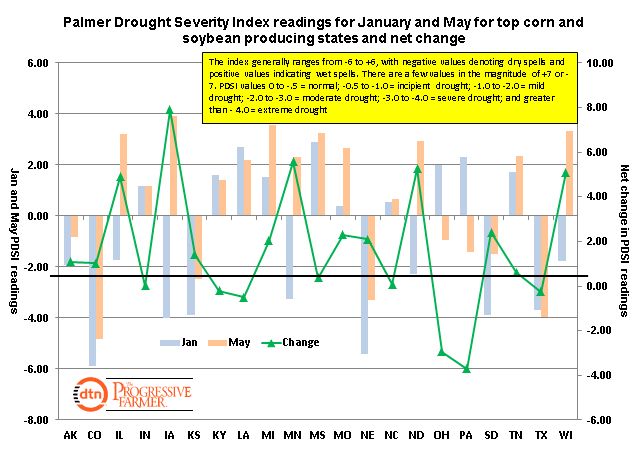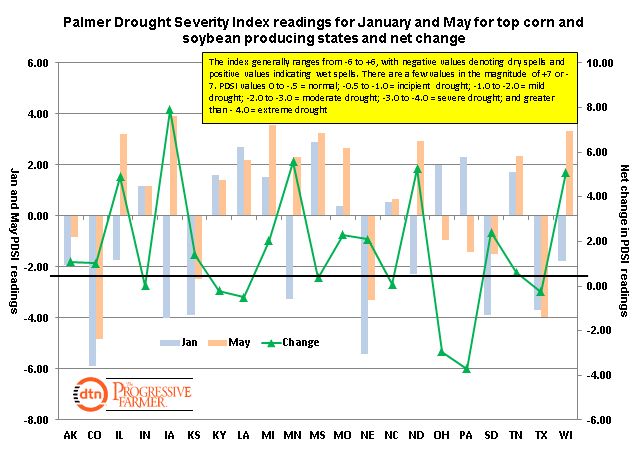Fundamentally Speaking
Drought Conditions in Top Corn, Soybean States
There continues to be a lot of handwringing about the heavy spring rains especially in the Upper Midwest and the impact on corn and soybean planted acreage and yields.
Both have been or expected to be revised lower in subsequent government reports.
This may or may not be so but there is no denying the dramatic improvement in sub-soil moisture supplies from the beginning of the year to the end of May as depicted by the Palmer Drought Severity Index (PDSI).
P[L1] D[0x0] M[300x250] OOP[F] ADUNIT[] T[]
This graphic shows the January and May PDSI readings along with the net change in the top 21 corn and soybean producing states.
The text within the yellow box denotes what the various PDSI readings mean with the negative numbers indicating various degrees of drought.
We continue to make note of the dramatic improvement in a number of states that were afflicted with severe drought last year.
There were 11 states that had some sort of drought at the beginning of the year including five of moderate intensity and at the end of May only eight states were in some sort of drought with just three having moderate or worse conditions.
12 of the 21 states have seen improvement from January to May as depicted by the green line with the largest net positive changes of 5.00 or higher include IA, MN, ND, and WI.
No surprise then that these four states have the largest amount of row crop acreage left to seed and these are the very states that are most vulnerable to the effect of an early or even normal fall freeze date.
Consider, however, these states in the Upper Midwest had severe or even extreme drought at the beginning of the year including Iowa with a PDSI reading of -4.00 and Minnesota at -3.24. So far, the growing season has featured good rains and moderate temperatures.
Should conditions turn dry, expect the chirping to start first in Plains where CO, KS, and NE still have severe drought especially in the western areas of those states and in OH and PA where the PDSI ratings have done down the most since the beginning of the year.
(KA)
© Copyright 2013 DTN/The Progressive Farmer. All rights reserved.





Comments
To comment, please Log In or Join our Community .